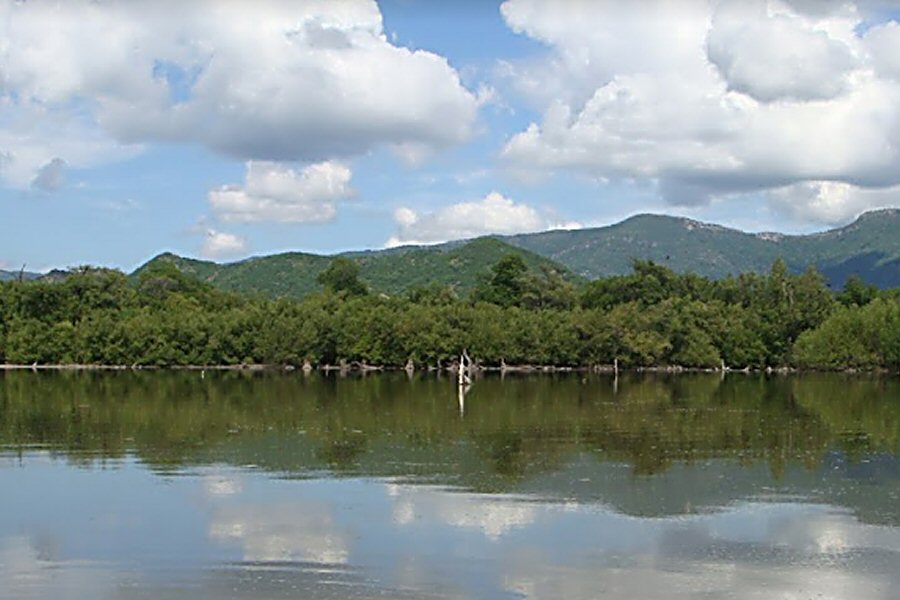Laguna Baconao is 51 km east of Santiago de Cuba, on the road to Baconao.

LAGUNA BACONAO
Laguna Baconao is a beautiful place
with a serene mountain landscape, where you will think that it
was worthwhile to drive 51 km from the center of the city of
Santiago de Cuba. There’s no public transport to this area. A
taxi from Santiago would cost upwards of 50 $ for the trip out
to Laguna Baconao.
Lagoons are areas that are
unprotected to droughts and alterations in the salinity and the
temperature of the water, but they offer a rich assemblage of
plants and animals. Many of them are fundamental passage
stations for the migratory birds, as well as a habitat for
endemic plants and animals. With passage of time, they end up
filling with sediment. This process takes a few months in
majority of the lagoons. The most durable ones remain for
several hundred years. Therefore, the diversity of the species
in the lagoons is low despite its extraordinary isolation. On
geological scale they are young systems, so that their short
duration doesn’t allow enough time for the appearance of the new
species.
Laguna Baconao is located at an altitude of 1 meter
above the sea level and has a surface of 4 km2. There
are many options to enjoy the place. You can be happy by
watching the caged flamingos and the grazing crocks, but better
you can rent a rowboat and practice the freshwater fishing.
Water bicycles are also available. You can rent a horse to ride
in the area. You can hire a guide and make a walk around the
lagoon following the path Sendero el Cimarron (cimarron is feral
animal like a horse or dog that has itself escaped from a
domestic or captive status and lives, more or less, as a wild
animal, even though it is descended from domesticated animals,
but usually cimmaron is defined as the native Cuban people that
escaped to the mountains because of the persecution of the
Spanish). There are several lakeside trails to make short hikes,
but if you want to circumnavigate the lagoon, you should be
ready to walk for 8 km. You can visit the reproduction of a
village of the native Indians, the Tainos. You may eat in one of
the nearby seafood restaurants while observing the crocodiles
move under the building. There are some dolphins living in the
lagoon, though its water is semi-saltwater.
